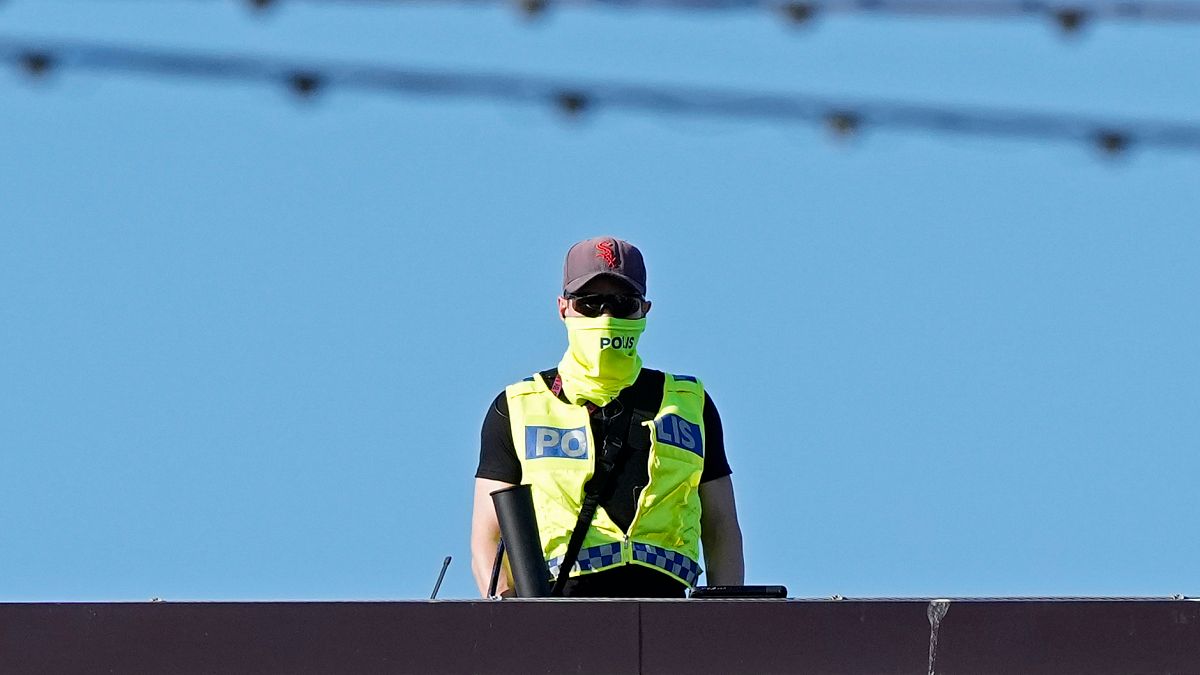In recent years, Malmö in southern Sweden and Copenhagen in Denmark have been grappling with escalating gang violence that has reached a critical point this summer. The two cities, separated by the Öresund strait, have seen a rise in attacks and killings, with Danish police reporting three deaths and multiple incidents of violence. A major concern for law enforcement is the increasing involvement of young individuals in these criminal activities, with teenagers under 18 being recruited to carry out hits due to lighter sentencing and less scrutiny compared to adults. This recruitment often takes place in socially disadvantaged immigrant neighbourhoods, with criminals targeting vulnerable youth through social media grooming.
The issue of cross-border crime between Denmark and Sweden has become a significant challenge, prompting police from both countries to collaborate and operate across borders. Swedish police have observed a surge in incidents where young Swedes are being hired by Danes to carry out crimes in Denmark, using weapons ranging from guns to hand grenades. This trend highlights the need for enhanced cooperation between law enforcement agencies to address the root causes of gang violence and prevent further escalation. The recruitment of teenagers for criminal activities underscores the urgency of implementing effective prevention strategies to steer vulnerable youth away from the influence of gangs.
Over the years, Sweden has been grappling with gang violence, while Denmark has also witnessed gang-related incidents, albeit on a smaller scale. The collaboration between Danish and Swedish police signifies a joint effort to combat organized crime and protect communities on both sides of the Öresund strait. Additionally, initiatives such as youth programs and social media monitoring are crucial in identifying and addressing the factors that contribute to the recruitment of young individuals into criminal activities. By targeting the root causes of gang violence and providing support to at-risk youth, authorities can work towards creating safer communities and curbing the influence of criminal organizations.
The recruitment of young individuals for criminal activities highlights the vulnerabilities and challenges faced by disadvantaged communities in Malmö and Copenhagen. The use of social media as a tool for grooming youth into criminal networks underscores the need for proactive measures to prevent online exploitation and protect vulnerable individuals. Initiatives such as youth programs and community engagement play a vital role in providing support and guidance to at-risk youth, offering alternatives to a life of crime and violence. By addressing the underlying socio-economic issues that fuel gang violence, authorities can work towards creating a safer and more inclusive environment for all residents of Malmö and Copenhagen.
The prevalence of cross-border crime between Denmark and Sweden underscores the interconnected nature of gang violence and organized crime networks. The collaboration between police forces from both countries reflects a shared commitment to tackling the root causes of gang violence and enhancing public safety. By working together to disrupt criminal activities and dismantle illegal networks, authorities can prevent further escalation of violence and protect communities from the harmful impact of organized crime. Initiatives aimed at addressing the social factors that contribute to gang recruitment and providing support to vulnerable youth are essential in building resilient communities and reducing the influence of criminal organizations.
In conclusion, the escalating gang violence in Malmö and Copenhagen highlights the urgent need for coordinated efforts to address the root causes of organized crime and protect vulnerable communities. By targeting the recruitment of young individuals into criminal activities, implementing prevention strategies, and enhancing cross-border collaboration between law enforcement agencies, authorities can work towards creating safer and more inclusive cities. Initiatives that address the socio-economic factors that fuel gang violence, such as youth programs and community engagement, are crucial in providing support to at-risk individuals and steering them away from a life of crime. Through joint efforts and proactive measures, authorities can combat gang violence and create a more secure environment for all residents of Malmö and Copenhagen.










